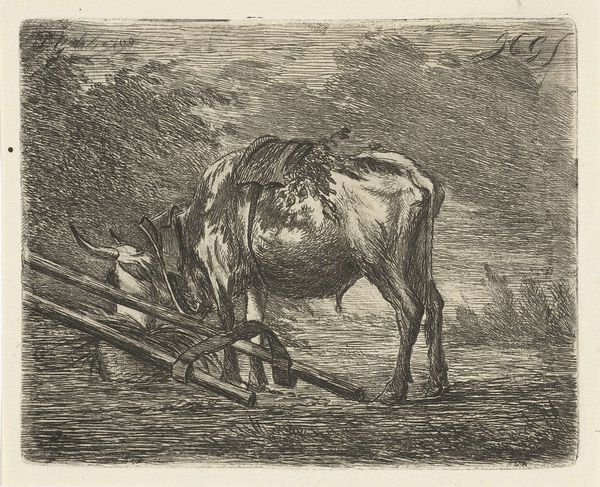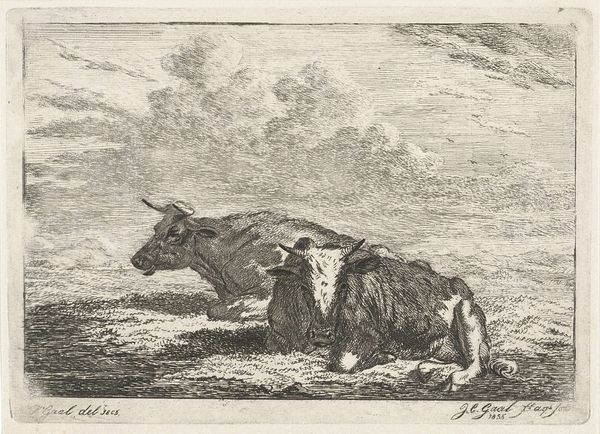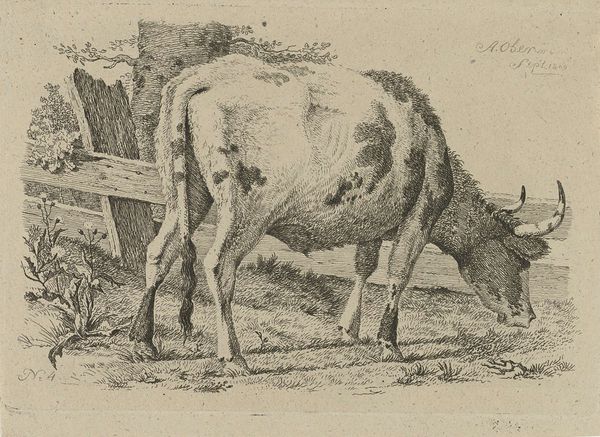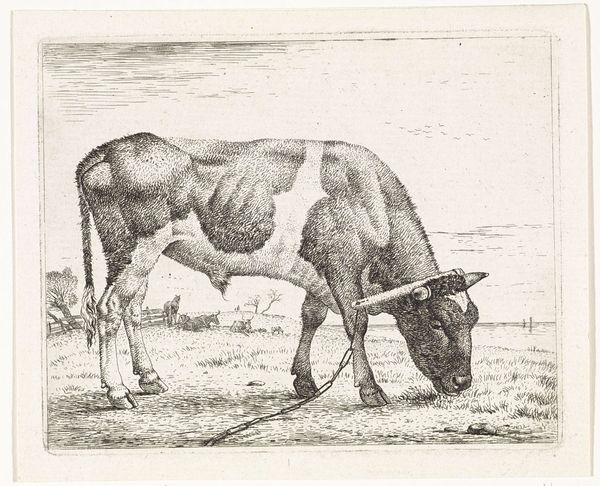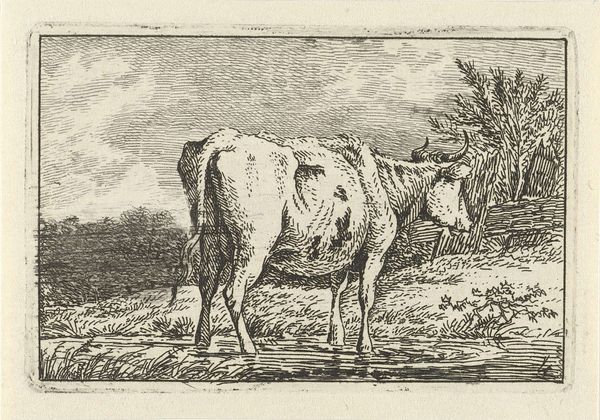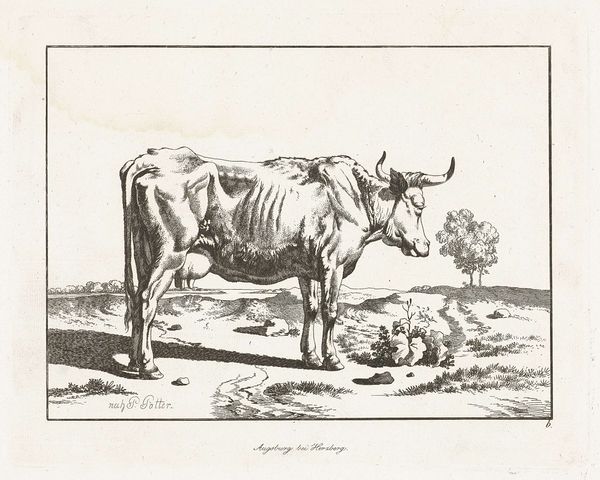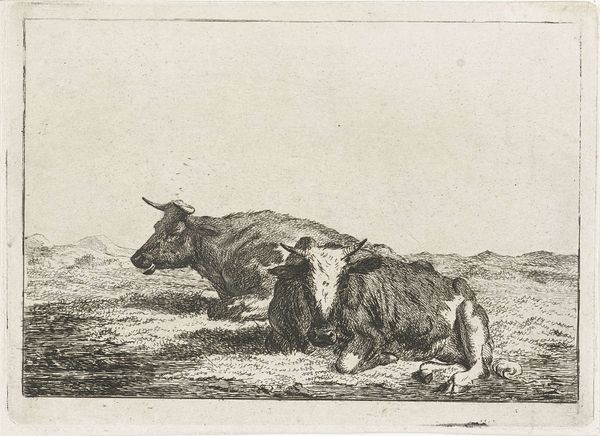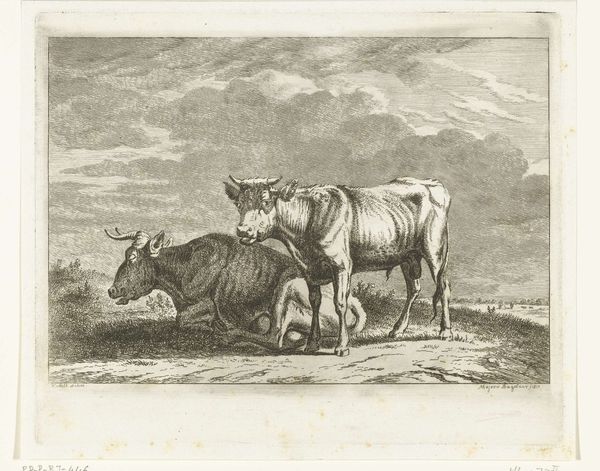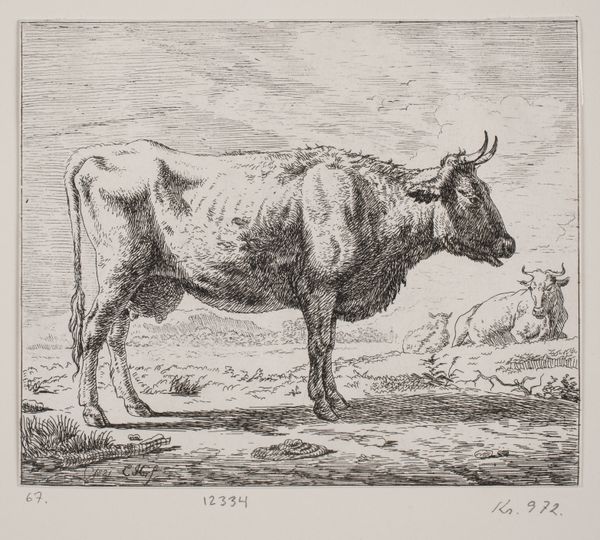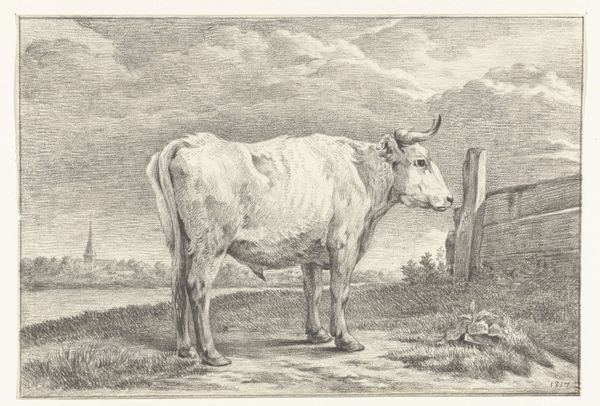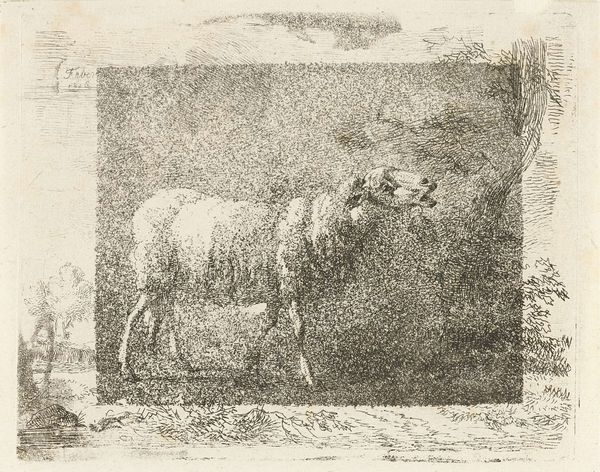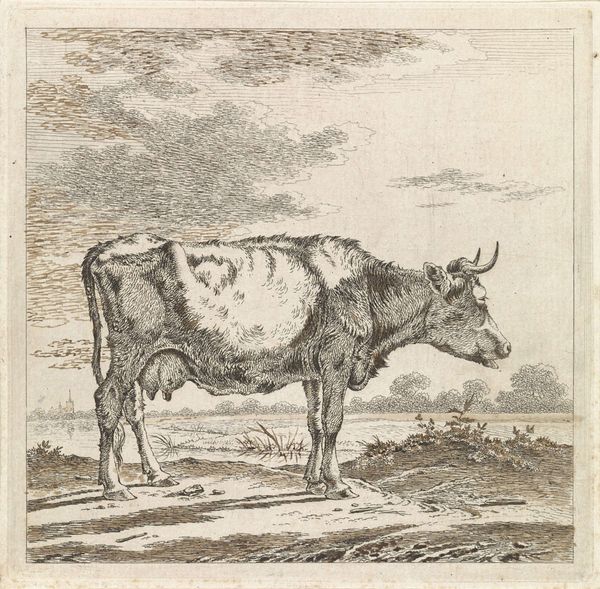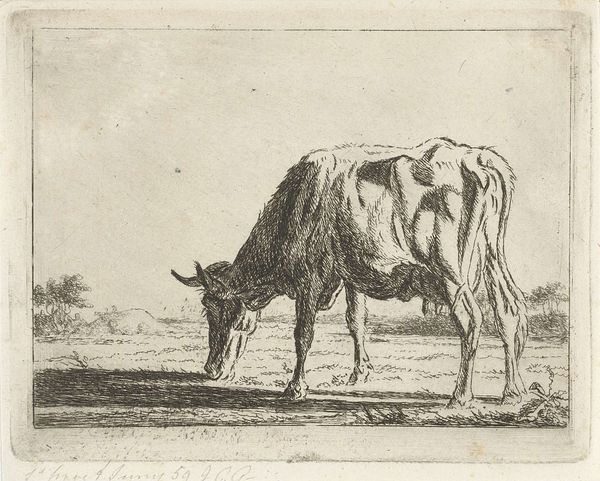
drawing, etching
#
drawing
#
etching
#
landscape
#
genre-painting
#
realism
Dimensions: height 93 mm, width 120 mm
Copyright: Rijks Museum: Open Domain
Curator: Editor: Here we have "Trekos met juk," or "Dray Horse with Yoke," an etching by Jacobus Cornelis Gaal, from 1860. I’m struck by the heaviness of the image; it's such a tired-looking animal burdened by its work. What do you see when you look at this? Curator: This piece speaks volumes about labor and its representation. Notice the artist's detailed depiction of the animal's harness and the yoke, tools crafted for a specific purpose. How does the artist’s technique of etching contribute to your understanding of this work’s context? Editor: Well, etching, as a reproductive technology, allowed for wider distribution of images depicting scenes of everyday life. So it made the life and work of common labourers more visible. Curator: Precisely! Consider the social implications of realism, and its shift towards representing the material conditions of labor. Does the depiction of this tired working animal prompt a dialogue about exploitation? Is the image of 'high art' challenged, made accessible? Editor: It does, doesn't it? The materials – the ink, the paper, the etched lines – become almost political in their act of documenting this everyday scene. It definitely changes how I think about landscape art of this time period. Curator: Absolutely. The very process of creating this print emphasizes the act of making visible the labor often overlooked by more traditionally esteemed forms of art. And further distributed by it, affecting its meaning over time and within other social strata. What began as labor became commodity as art object. Editor: So, it is both a document of labor, and itself a product of labor, mass-produced and accessible to all. Food for thought! Curator: Exactly. These intersections of making and meaning reveal powerful insights into the society that produced this artwork.
Comments
No comments
Be the first to comment and join the conversation on the ultimate creative platform.
